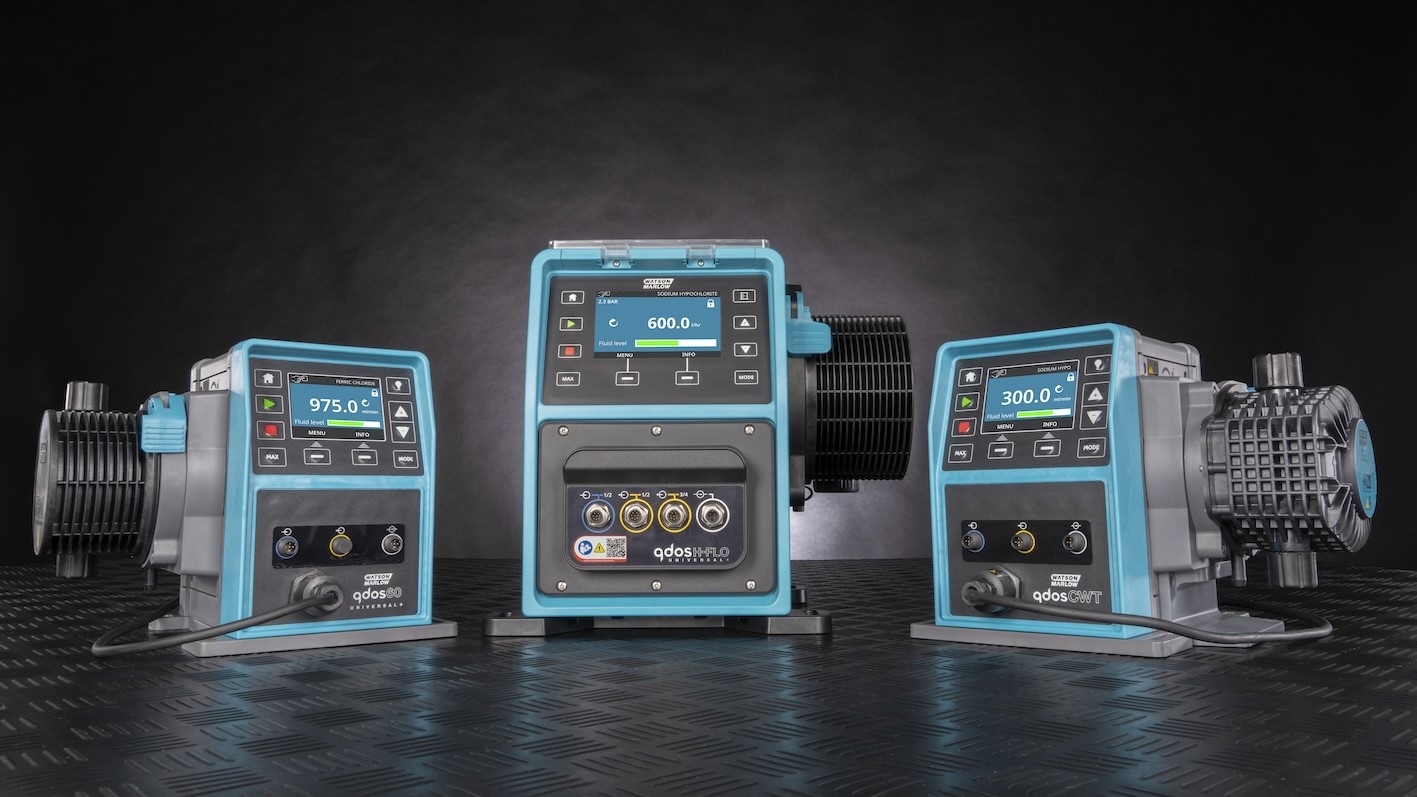For water and wastewater companies to achieve cost savings, a reliable operation and meet compliance regulations, there are some crucial priorities to consider when selecting a chemical metering and dosing pump in 2025.
Gavin MacGregor, Regional Sales Engineer at Watson-Marlow Fluid Technology Solutions (WMFTS), explains what pumps for dosing applications can reduce costs while simplifying your process and lowering your company’s carbon footprint.
What challenges are facing water and wastewater companies in 2025?
Each UK water authority will be subject to stricter regulatory changes enforced within the new Asset Management Period (AMP8), which begins in April 2025. There will be a strong focus to ensure that regulations are followed to tackle pollution and the impact of climate change. Failure to do so will result in large financial penalties, bad publicity and reputational damage.
The other challenge is sustainability and carbon emissions. Although water authorities have embraced this challenge, there are constant hurdles to overcome in relation to energy consumption, operational requirements, site upgrades and innovation. Carbon footprint requirements have quickly become a universal priority.
Heading into AMP8, our water and wastewater customers will be required to focus on overcoming these challenges and at Watson-Marlow we strive to support our customers along this journey.
What solutions do WMFTS offer to address some of these challenges?
The Qdos® range of peristaltic dosing pumps, from WMFTS, can eliminate the need for ancillary equipment with flow rates from 0.1mL/min to 120 L/hr at pressures of up 9 bar. As part of an exercise, some of our customers compared the total cost of ownership of a Qdos pump versus a conventional diaphragm pump technology. Our customers found Qdos beneficial from a total cost of ownership aspect as it eliminates the necessity for ancillaries such as foot valves, loading valves, pulsation dampeners and the additional pipework and isolation valves to accommodate the ancillaries. Also, from an operational aspect, the rapid, tool-free pumphead change with a Qdos pump ensures minimal downtime and reliability after service.
As well as the cost of the ancillaries, you could also take into consideration the carbon footprint of those ancillaries and the additional footprint required to incorporate these into a chemical dosing skid. The cost of ownership of a Qdos is not only less than that of a diaphragm pump, but it can also reduce a dosing skid’s carbon footprint, and the physical footprint as well. And as maintenance is simple with Qdos, there is the potential for reduced operational demand with visits to the site, which contributes to reduced emissions.
Accuracy is another priority for chemical dosing. It is generally accepted that peristaltic pump technology is more accurate than diaphragm pumps. Qdos pumps have an accuracy of ±1% and repeatability of ±0.5%. From a chemical consumption and operational point of view this can result in chemical savings and contribute to reduced emissions with less frequent chemical deliveries.
Can you tell us how Qdos has helped a customer, and how that customer is using Qdos?
We work with the UK’s leading chemical dosing systems provider that integrates Qdos dosing pumps in their dosing skids. These systems are deployed across various UK water authorities for applications that historically have been challenging for diaphragm pumps. Chemical dosing systems with Qdos pumps are used by major water and wastewater treatment plants all over the UK. The simplicity and easy installation of the Qdos, along with their proven operational benefits, make Qdos a preferred chemical dosing solution for both contractors and water authorities.
Are you seeing growing numbers of Qdos displace other pump types?
Yes! Qdos was designed to be a disruptive technology, an alternative solution to the heavily populated diaphragm pumps typically associated within chemical dosing applications. However, there has been a shift in mindset in recent years as our customers are really seeing the benefits of the Qdos range compared to conventional diaphragm pumps. Whether it’s a reduction in chemical consumption with the superior accuracy and repeatability, the rapid pumphead change for maintenance or the simplicity of reduced ancillary equipment required, Qdos has made a noticeable impact across the UK and is now becoming standard with multiple water and wastewater treatment sites.
The Qdos is also now compliant with a recent revision of Water Industry Mechanical and Electrical Specification (WIMES) guidance. The Qdos range complies with the performance requirements (accuracy, repeatability, suction lift, turndown ratio, self-priming / run dry capability) advised within WIMES.
What should a company consider when selecting a new pump for dosing?
There are numerous aspects to consider when considering a solution for chemical dosing applications. It is useful to consider:
- What are you trying to achieve?
- What are your key drivers (for example: accuracy / repeatability, safe maintenance, carbon emissions)?
- What is the media / chemistry that you intend to dose?
- What are the duty requirements in terms of desired capacity and operational needs?
- What are your environmental and installation constraints?
- Future-proofing (will the application be the same in three years?)
- Always review and check for feedback; the goal is to provide a solution first time around
Qdos H-FLO was launched last year for flow requirements of up to 600 L/hr and provides an insight into the technological innovation capabilities of WMFTS. The Qdos H-FLO common drive and interchangeable pumpheads allow for process flexibility and future-proofing your application. It is also worth noting that Qdos H-FLO now incorporates a revolution counter function to further aid with planned and preventative maintenance.



